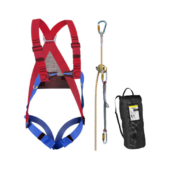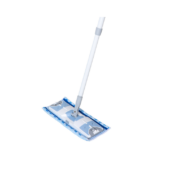Efficiency and automation are essential for competitiveness in today’s fast-paced corporate climate. Automation may improve procurement, which buys necessary products and services for a firm. Procurement may seem simple, but manual tasks, long approval cycles, and inefficiencies waste time and money. Modern organisations need modern procurement methods to automate.
You’ll: After reading this:
- Learn about procurement automation, its benefits, and its crucial role in modernising and optimising corporate procedures.
- Gain practical advice on procurement automation system implementation, from roadmap creation to typical issues.â
This detailed tutorial explains procurement automation, why it’s important, and how to adopt it in your organisation. This handbook is for everyone, from procurement managers aiming to improve procedures to C-suite executives calculating the ROI of procurement automation.
What is Procurement automation?
Any company needs procurement to source goods and services and manage vendor relationships. Businesses develop, making procurement duties increasingly complicated and daunting. Procurement automation helps.
Procurement automation uses technology to simplify, automate, and optimise procurement operations like procure-to-pay. Businesses may automate buy requisitions, approval workflows, purchase order administration, invoice approvals, and more using tools, software, and platforms. Procurement should be speedier, more efficient, and less error-prone to offer strategic value to the organisation.
Challenges of Manual Procurement
Manual procurement is time-consuming and complicated from request to payment. Manual procurement problems include:
- Time-consuming: Manual procurement generally requires numerous stages. Approve purchase requests, validate delivery, and handle payments.
- Inaccurate data input, missing approvals, and deleted invoices can cost money.
- Lack of Visibility: Paper-based or disjointed digital systems make real-time spending, budgeting, and supplier performance tracking difficult.
- Scalability Issues: As a firm expands, procurement chores increase, making manual methods unsustainable.
Procurement automation improves the purchase process and solves several manual issues. Benefits spread across the organisation, benefiting the AP team and saving time. Technology investments may pay dividends, making procurement a strategic asset rather than a logistical headache.
How Can Procurement Automation Help Your Business?
Consider the many benefits of procurement automation if you’re on the fence regarding it for your business procedures. Here are some irresistible advantages:
Optimising Cost in procurement automation
Cost reductions are an immediate benefit of procurement automation. Automation simplifies the purchasing process from demand to payment, reducing administrative costs. Eliminating duplicate stages reduces mistakes that might be costly to fix.
Manual Error Reduction Improves Efficiency
A single human error might cause delays and financial loss. The procedure is more efficient with automation since manual mistakes are minimised. Automation can instantly validate data, fixing errors and incompleteness before they become an issue.
Increases Spend Visibility
Automation technologies generally include analytics and real-time tracking. Your organisation can immediately see spending patterns, supplier performance, and contract compliance with this capability. Real-time analytics help negotiate better supplier terms, ensure policy compliance, and find cost-saving options.
Central Data Store in procurement automation
A central database maintains all procurement data, from supplier data to purchase history, making essential data accessible. This repository can provide analytics for better purchase strategy.
Decision-making with data
With reliable, real-time data, you can make prompt, well-informed judgements. With procurement automation, data-driven decision-making becomes second nature, whether choosing vendors or buying times.
Reduce Approval Bottlenecks
Multiple clearance processes in traditional procurement can delay purchases and increase inefficiency. Automation streamlines approval by creating established routines. This feature speeds up buy requisitions, lowering purchase completion time.
Existing Workflow Scaling
Your buying demands will certainly expand with your firm. Automation can scale better than manual systems. Procurement automation lets you extend processes to handle more transactions, suppliers, and procurement activities.
Existing App/System Integration
The latest procurement automation tools interact easily with your IT stack. A good procurement automation software should integrate with your ERP, accounting, or other company tools, making the transfer easier and improving user engagement.
Risk Reduction in procurement automation
By standardising procurement procedures and recording all transactions, automated solutions reduce manual process risk. You can handle audits, industry rules, and corporate policies better.
Procurement automation may transform your business’s purchasing and supply chain. As we enter the digital age, procurement automation is no longer a “nice-to-have” but a need for competitiveness.
Procurement Automation Roadmap
Moving from manual to automated procurement might be scary. A well-planned roadmap simplifies the procedure. This step-by-step tutorial will help you set up procurement automation:
Map Your Procurement Workflow
To deploy an automated system, you must understand your present procurement process. Use flowcharts or process mapping software to outline each phase, from procurement to payment. The map should include:
- Key stakeholders at each stage
- Duration of each activity
- Bottlenecks or inefficiencies
- Current tool and system usage
Evaluate Automation Options
After creating your process map, identify places where automation could boost productivity and minimise mistakes. Ask queries like:
- Which stages repeat and cause manual errors?
- Where do permission delays occur most often?
- Can real-time analytics help specific decision-making stages?
Find Good Automation Software
After identifying automation opportunities, start looking for a software solution. Some things to consider:
- Is the programme compatible with your systems?
- What features address your pain points?
- Can the software grow with needs?
- What is the entire ownership cost, including setup and maintenance?
Automate Workflows
After choosing your software, design automated processes based on the original process map and the areas you highlighted for automation. At this level, work with your supplier to customise the system.
Implement, Test, and Improve Workflows in procurement automation
Implement the automated workflows in a controlled environment with a smaller team or subset of suppliers. Check the process and get feedback to make modifications. Scale organization-wide implementation once confident.
Track performance using KPIs in procurement automation
Finally, set KPIs to evaluate your automated system. Common KPIs:
- Saved procurement cycle time
- Reduced manual mistakes
- Savings from better contract negotiation
- Rate of internal policy compliance
Check these KPIs often to make sure the system is working as planned and make changes.
Following this path will simplify the move to an automated procurement system and maximise its benefits. Remember, procurement automation is about changing your organization’s procurement process to improve efficiency, decrease risk, and save money over time.
Procurement Processes That Are Easy to Automate
While “automation” may seem complicated, many procurement processes may be simply automated to increase efficiency. Let’s look at some instances of how automation might change these processes:
Workflow: Purchase Requisition, Approval, and PO Creation
Manual Process
- Purchase Requisition: An employee manually fills out a form to request a purchase.
- Initial Approval: The immediate supervisor approves the request form.
- After first approval, the form is forwarded to procurement for final approval.
- After final approval, a Purchase Order (PO) is manually prepared and delivered to the vendor.
Workflow Automation
- Employees submit digital purchase requisitions using automated platforms.
- Initial Approval: Automated rules deliver requisitions to immediate supervisors.
- The requisition automatically enters the procurement department’s queue for final validation after approval.
- PO Creation: The vendor receives an automated PO without manual input, speeding up the process.
Supplier Relationship Management
Supplier performance management by hand is inefficient. Autotools can:
- Process supplier onboarding more efficiently
- Real-time supplier performance monitoring
- Improve communication using automated surveys and feedback loops.
Manage Invoices
Automation lets you:
- Auto-match invoices to POs and deliveries
- Faster approvals via mobile applications or email
- Automate payments after invoice approval to avoid late penalties.
Payments to vendors
Payment automation for vendors:
- Integration with your accounting system streamlines the procedure.
- Reduce transaction costs by batching payments.
- Create payment records automatically for tracking and auditing.
Contract Management
Automation also improves contract management:
- Digitised contracts for easy retrieval
- Automatic renewal or compliance reminders
- E-signature to speed approval
Automation may streamline procurement by eliminating manual labour, mistakes, and transaction times. As you implement additional automated systems, you’ll likely discover that these operations are just the beginning of what can be automated efficiently.
New Procurement Automation System Adoption Challenges
Though procurement automation seems to be thrilling, its adoption is not without difficulties. Knowing these challenges will allow you to go past them. Some common organisational difficulties are:
Stakeholder Adoption Issues
Getting employees, management, and suppliers comfortable with new technologies is difficult. The switch to automation is difficult because people resist change.
Time and Money Investment
Startup costs and time are another consideration when installing a new automation system. Train people, move data, and integrate workflows onto the new system takes time.
Checklist: Procurement Automation Tool Selection Considerations
Choosing the appropriate procurement automation technology may make or break your efficiency. While features and functions are important, assess how effectively the tool will fit into your processes and systems. This checklist lists the most important aspects to consider while making a decision:
Approval workflow compatibility and visibility
- Can you customise approval protocols for various transactions or vendor categories?
- Can you trace a purchase order through approval in real time?
- User-friendly Interface: Does the tool’s interface simplify the approval procedure for stakeholders?
Tech-Stack Integration
- API compatibility: Does the product interface with your ERP, accounting, and other business applications via APIs?
- Does your favourite programme have plug-and-play integrations?
- Is data transfer across systems straightforward without manual effort?
Renewal Management
- Alerts and Notifications: Does the tool remind contract renewals or subscription payments?
- Historical Data: Can you easily access past contracts to guide renewal decisions?
- Does the system allow automated renewal?
Manage Vendors
- Does the tool centralise vendor data including contracts, communications, performance measures, and payment history?
- Compliance Checks: Does it verify vendor compliance?
- Vendor Onboarding: How easy is vendor onboarding?
Advanced Stats
- Is there a complete dashboard that shows KPIs?
- Data filters: Can time, department, vendor, etc. be used to filter analytics?
- Predictive Analytics: Can the technology anticipate expenditures, trends, or vendor performance?
Payment Processing Simplified
- For worldwide operations, does the tool handle numerous currencies?
- Payment Options: Does it accept wire transfer, credit card, and ACH?
- Can the technology automatically match invoices with purchase orders and delivery receipts?
Understanding these problems might help you plan and reduce their effects. With Zip and a detailed checklist, procurement automation will go more smoothly.

















